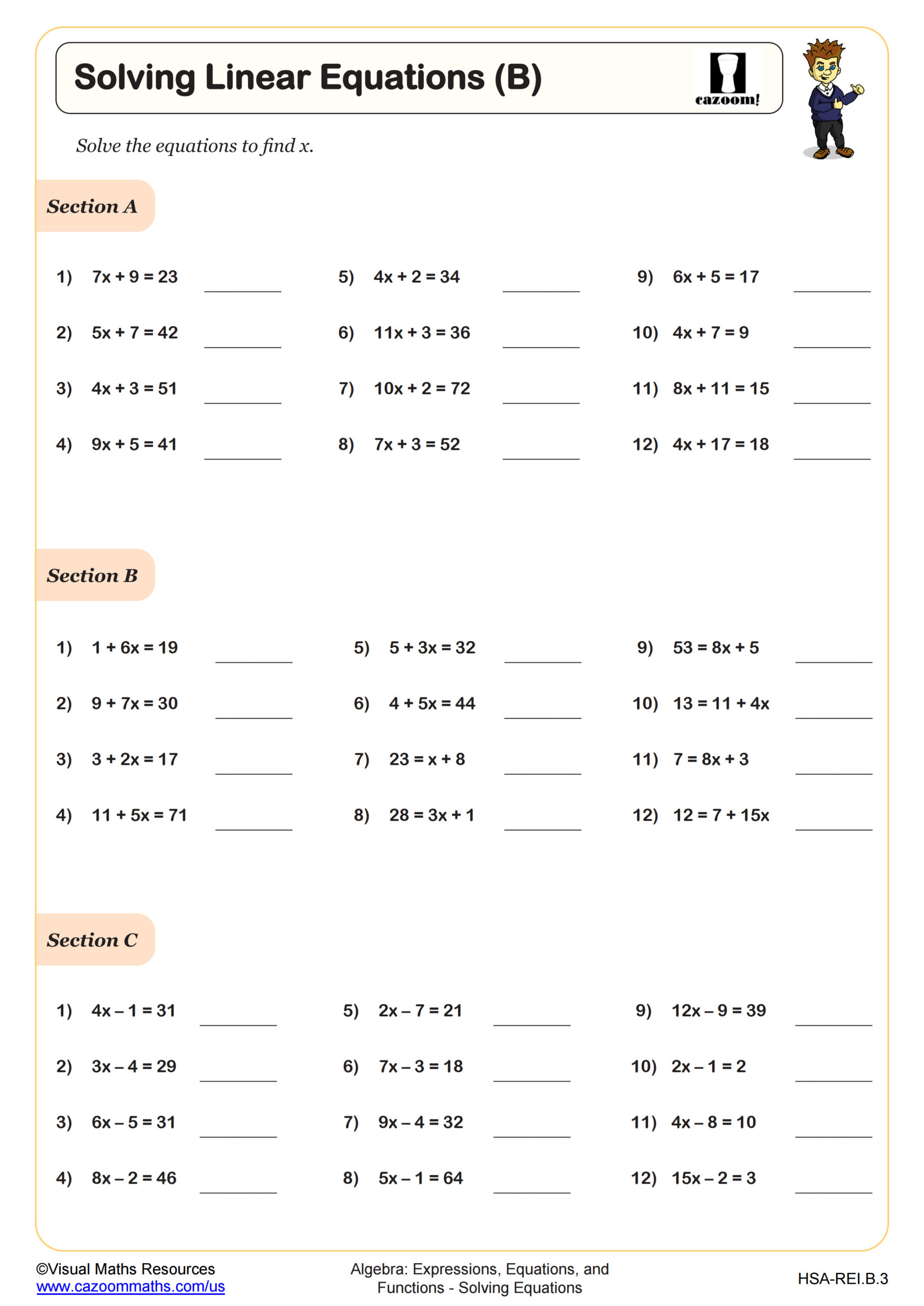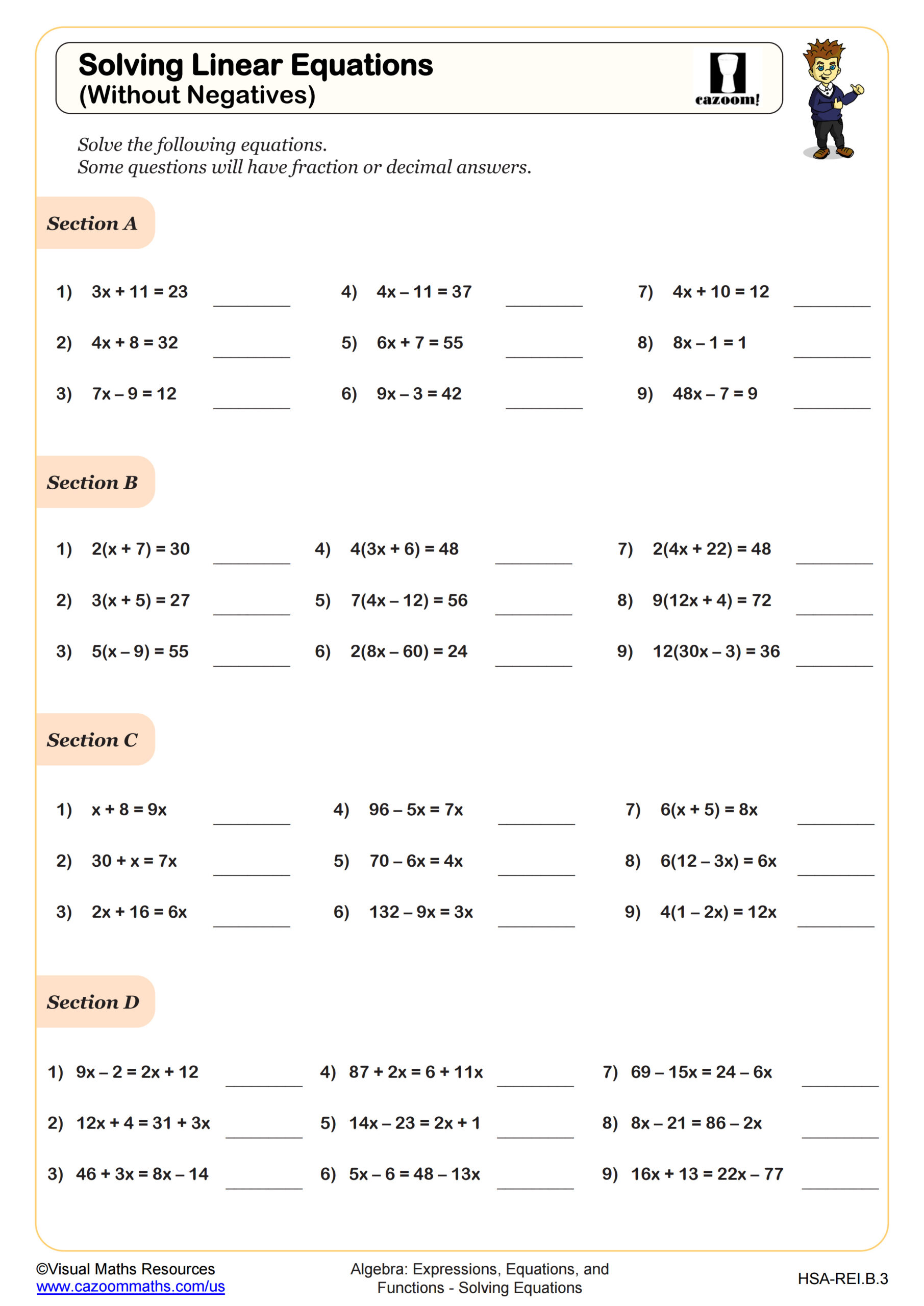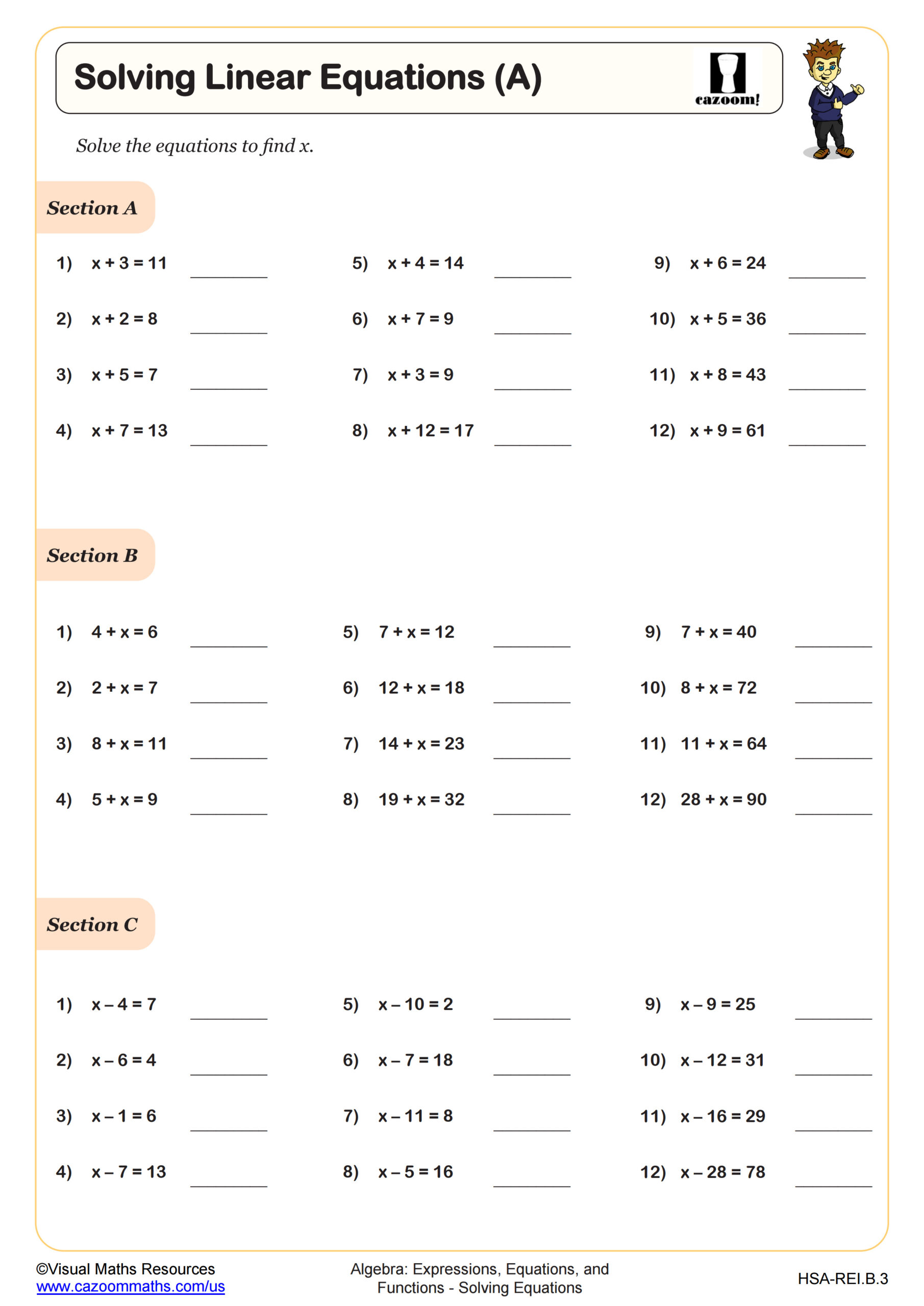Loading...
Back to:
Solving Linear Equations (B) WORKSHEET
Suitable for Grades: Algebra I, IM 1
CCSS: 7.EE.B.4, HSA.REI.B.3
CCSS Description: Use variables to represent quantities in a real-world or mathematical problem, and construct simple equations and inequalities to solve problems by reasoning about the quantities. a. Solve word problems leading to equations of the form px + q = r and p(x + q) = r, where p, q, and r are specific rational numbers. Solve equations of these forms fluently. Compare an algebraic solution to an arithmetic solution, identifying the sequence of the operations used in each approach. For example, the perimeter of a rectangle is 54 cm. Its length is 6 cm. What is its width? b. Solve word problems leading to inequalities of the form px + q > r or px + q < r, where p, q, and r are specific rational numbers. Graph the solution set of the inequality and interpret it in the context of the problem. For example: As a salesperson, you are paid $50 per week plus $3 per sale. This week you want your pay to be at least $100. Write an inequality for the number of sales you need to make, and describe the solutions.
Solve linear equations and inequalities in one variable, including equations with coefficients represented by letters.
Solve linear equations and inequalities in one variable, including equations with coefficients represented by letters.
Solving Linear Equations (B) WORKSHEET DESCRIPTION
This worksheet is designed to give plenty of practice of solving simple two-step equations. Sections A, B, and C provide equations in the form ax+b=c, a+bx=c, and ax-b=c with answers that are all positive integers or fractions. Sections D, E, and F then provide equations in the same form, but the answers could be negative integers.




